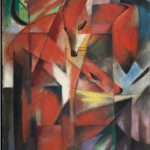
PARIS.- Bernar Venet is the Palace of Versailles’s guest in 2011. He is taking over from Takashi Murakami who, as we know, attracted considerable interest and sizeable crowds in 2010. The exhibition is on view from June 1st through November 1st, 2011. The Palace of Versailles chose Bernar Venet to showcase a French artist’s meticulous, intense efforts to probe the question about the relationships between art, landscapes and architecture, and therefore between art, time and history.
I was excited when Jean-Jacques Aillagon asked me to take over the Palace of Versailles for two reasons: because it was an amazing backdrop for my sculptures, and because it was an amazing opportunity to capture my conception of space. I found Versailles fascinating even before they started organising contemporary art exhibitions. I made my own photomontages, overlaying my sculptures and the Chateau de Versailles backdrops, long before the Jeff Koons exhibition. I kept that project secret, along with several other “perfect views” for my work. During the Versailles heyday, those projects would have been called “caprices”. The only difference is that, in my case, they were sculptural rather than architectural “caprices”.
Versailles, as I see it, is all about wide open spaces and perspectives that stretch as far as the eye can see. It is the perfect venue for my sculptures – and a real challenge to take on such a sublime, grandiose milieu. My Arcs have to blend in without fading away in the backdrop. So I have to accommodate several variables. That was why I decided to tailor new sculptures to the area’s topology and scale. It was clear at the start that my sculptures would not be on show inside the Château, as they would unleash their full potential in the paths across Le Notre’s gardens. I am thinking about the sunrises and sunsets, and the golden light that steeps the Corten steel in red and brown hints.
 The curves on my sculptures will contrast with the angular geometry in the gardens, and espouse the circular edges around the Basin d’Apollon and Grand Canal. – Bernar Venet
The curves on my sculptures will contrast with the angular geometry in the gardens, and espouse the circular edges around the Basin d’Apollon and Grand Canal. – Bernar Venet
When he was doing his military service in Tarascon (in Southern France), in 1961, Bernar Venet delivered a performance lying nestled in refuse. That was the first work he laid claim to. More than 50 years down the road, this artist is taking over the Palace of Versailles court of honour and gardens with his Corten steel Arcs, Lignes Indéterminées and Effondrements (“collapses”). The book published for this exhibition tells this protean artist’s visual story, the story about his path from conceptual art to public art, and the story about how his paintings, installations, performance, monumental sculptures and even writing have made a lasting mark on the contemporary aesthetic landscape.
Bernar Venet’s career began in 1961 when he coated canvas with tar and exhibited mere mounds of coal as sculptures. The French artistic scene’s leading lights – Arman, César, Jacques Villeglé, etc. – promptly encouraged this avant-garde artist to take it further.
He moved to New York in 1966, discovered minimal art there, and continued experimenting with tubing blueprints, reproducing scientific drawings solely to distil the evocative, meaningful views. The neutral images were stripped from any artistic addition and devoid of the artist’s subjective eyes. He exhibited alongside the day’s minimal and conceptual art top names – Sol LeWitt, Donald Judd, Carl Andre, Dan Flavin, etc.
He made the mainstream with exhibitions featuring his sculptures around the world (inter alia in Paris). In Versailles, he will be baking over the eminently classical and distinctly geometrical Palace gardens, which radiate the rules of perspective. He is fully aware of this symbolic aura enveloping this place, and set out to underscore the lines, capture the coherence, and cast a new light on it – on occasion using contrast, i.e. a overlapping a collapsing view and the exactly drawn lines (for example, something that looks like a wreck, not lacking in form yet deliberately anti-formal, between the Bassin d’Apollon and the Grand Canal, enthroned in the par-excellence architectural gem that is Versailles). Bernar Venet was born in 1941 in Château-Arnoux Saint-Auban, in the Alpes de Haute Provence (France). He lives and works in New York and Hungary.







